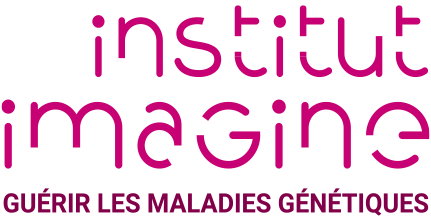Published on 18.12.2019
What place do genetic diseases hold within rare diseases?
80% of diseases considered to be rare are of genetic origin. Rare diseases affect fewer than 1 in 2,000 people. Taken separately, these diseases are highly rare, even exceptional, but throughout Europe, they affect 35 million people. In France, 3 million French people are affected, nearly one in 20.
Genetic diseases occur because of an alteration in the base entity which makes up our body, the cell, at the level of our genome. Once a gene is affected, it is followed by a defective or absent production of protein. Yet, these molecules are supposed to fulfill specific functions in the cells. The damage of one single gene affects multiple organs in a more or less harmful way, impacting the lives of the people concerned. However, the mechanisms of the same rare disease or the same type of disease can vary. For example, in 2001, Corinne Antignac's team at Imagine was the first to highlight a genetic origin of steroid-resistant nephrotic syndrome. In these patients, the kidney does not successfully play its role of sorting macromolecules. As a result, proteins that are normally retained in the blood accumulate in the urine. Since then, more than 20 other genes that could be at the origin of this syndrome have been identified.
What value is provided by knowledge of the genetic anomaly in question?
Identifying the defective gene is essential for continued research to better understand the disease. Researchers can then explore the cellular mechanisms involved and above all try to restore them. It is the same principle that prevailed when Imagine was created: generate expertise synergies between doctors and researchers to advance research in genetic diseases and cure them.
Even if there have been significant improvements at the level of rare diseases, young patients and their family sometimes arrive at Imagine after months, even years, of misdiagnosis. Therefore, we make every effort to identify the origins of the disease. Often the families explain to us that, to them, arriving at Imagine is their last chance. Filled with doubt and often feeling discouraged, at Imagine they find a place where doctors and researchers will do everything, above all, to give a name to the disease that their child suffers from, and the hope of these families is renewed.
And treatments have already been developed at Imagine?
There is still a lot to be done to treat all children, but each cure proves to us that we are on the right track. In 2017 and 2018, under the leadership of Pr. Marina Cavazzana, gene therapy proved its potential to treat children with two forms of hereditary anemia: sickle-cell anemia and beta-thalassemia. The patients who have had their defective gene repaired, as this is the principle of this treatment, now produce enough hemoglobin and no longer need transfusions. Trials are also underway in children and teenagers with dystrophic epidermolysis bullosa, a skin disease which can lead to loss of sight, fusion of the fingers and toes, as well as cancer. They follow the work of Alain Hovnanian's team.
In interferonopathies, the work of Frédéric Rieux-Laucat's team and Yanick Crow's team at Imagine has deciphered defective cellular mechanisms and ways to counteract them via JAK1/2 inhibitors. Thanks to these discoveries, Fanny, who arrived at the Institute in 2014 presenting with lesions almost stopping her from walking, and bouts of pain causing her to vomit, now lives like all other children her age. In only 3 years, the expertise synergies between doctors and researchers at Imagine have enabled a new disease to be outlined, to understand the genetic cause, the mechanism and develop a treatment. That is the strength of integrating treatment and research at Imagine: never give up, look for good collaborations, innovate without stopping to conquer genetic diseases.
Other children like Fanny have benefited from Imagine’s great potential. However, genetic origins are still unknown for nearly half the children with a genetic disease and 95% of genetic diseases have no specific cure. This observation can only encourage us to continue the fight, especially as the first results obtained already show that we are on the right track.





